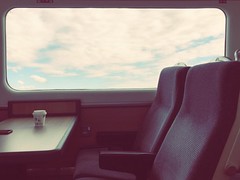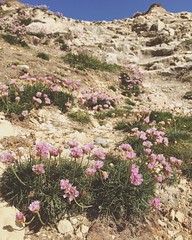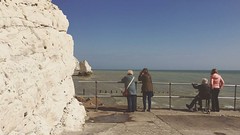You enter through the little grocers shop on the corner. Jars on the counter of aniseed balls and wrapped toffees, boxes of fly papers and starch, neatly lined up on the shelves.
We’re hot after the walk up the hill from George Street in heat of almost 100 degrees. Sweat beaded on upper lips, small children looking like lettuce that’s been left too long in a sauna. There is some small relief to be had from stepping into the building and out of the sun, but the close, poorly ventilated rooms do nothing to cool us down. It seems rather fitting, as it gives us some idea of what it must have been like to live in this densly packed area of the city in the days before fans and air conditioning.
The rooms in the row of four terraces have been restored as minimally as possible, walls and floors have been left as they were found. Layers of lino reveal themselves, piled one on top of another, like Turkish rugs in a shop. Paint flakes and peels, colour upon colour, like an intricate work of art.
Each room represents a family and the era that they inhabited the house. The curator tells us stories about the people who lived there, ordinary families living quietly, printers, dock workers, seamstresses, labourers and their children, elderly parents, lodgers. Baby Anna slept in the crib in the 1840’s, Nana Moran stoked the copper and did her washing every Monday during the 1950’s, Ellen made children’s clothes on the Singer sewing machine in the 1970’s and Mary Ann ran the shop in the 1870’s.
There are few items of period furniture, and fewer personal possessions, a rosary, a homemade go kart, an outfit in a wardrobe. Some things are new, like the curtains and blinds, some the original possessions of the inhabitants, like the 1970’s washing machine in the yard, and little can’t be touched. The arrangement of belongings in the cracked, peeling, layered buildings feels like an art instillation. A small decorative bird cage, someone’s pride and joy, hanging on a wall mottled like an old person’s liver spotted hand, is strangely moving.
The day before we also visited the excellent Rocks Discovery Museum. We learnt about the history of the area through informative displays and answered riddles to work out the stories. I can’t fault it, and it greatly added to my knowledge of early Sydney. But it’s Susannah Place that will stay with me. The muted greys and greens of the pockmarked walls, the single fly paper hanging from a bedroom ceiling, a little china donkey in pride of place on a mantlepiece. People’s lives.


















